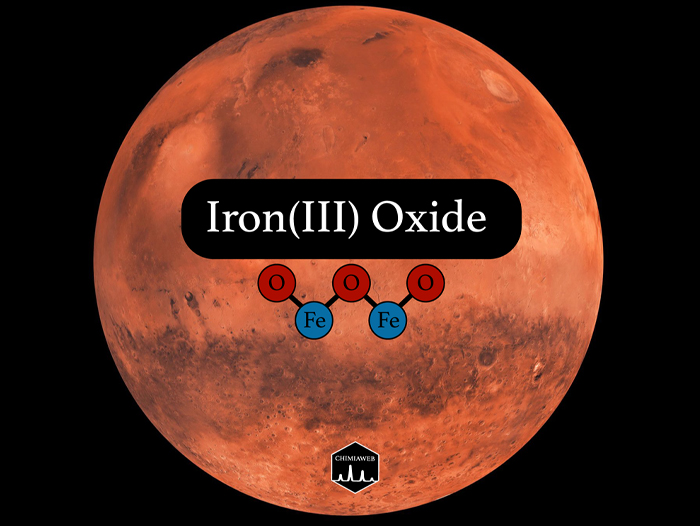Mars has always been fascinating to humans as a mysterious red dot in the night sky since ancient times. Being one of the five planets visible with the unaided eye, Mars was known to the ancients. It has been included in myths, literature, religion, and later in cinema.
Mars got its name from the Roman god of war. In several ancient civilizations, such as the Greeks, Egyptians, Romans, Hindus, and Chinese, this fiery red planet was a symbol for war and anger, which is most likely due to the planet’s reddish appearance.
From a chemistry point of view, the color of Mars originates from oxides of iron, which exist on the planet’s surface. There is a wide variety of colors on the Mars surface, depending on the composition of minerals, including brown, golden, tan, green, and red as the predominant color.
Hematite is a red form of iron oxide with a chemical formula of Fe2O3. It is composed of two iron atoms and three oxygen atoms. Hematite, also known as iron(III) oxide, is mainly responsible for the red color of the planet.
Based on laboratory experiments and geochemical data, Mars contains approximately twice as much iron as Earth does. Iron (Fe) is prone to oxidation in the presence of free oxygen. It means that during this chemical reaction, iron loses electrons. These electrons from the iron go to the oxygen.
The required source of oxygen can be provided from the breakdown of water molecules (H2O), carbon dioxide (CO2), or other oxygen-containing compounds. However, the process through which oxidation of iron occurs on Mars is not exactly known yet.
This process results in the formation of iron oxides, which at first occurs as a coating on the planet’s upper layers. When these coatings erode and break up, smaller particles are formed. Tiny dust particles are carried by the wind and spread all over the Martian atmosphere. Dust particles contain large amounts of nanocrystalline red iron(III) oxide. Therefore, suspended dust particles in the Martian atmosphere are the main reason why Mars appears mostly red from the distance we see.

